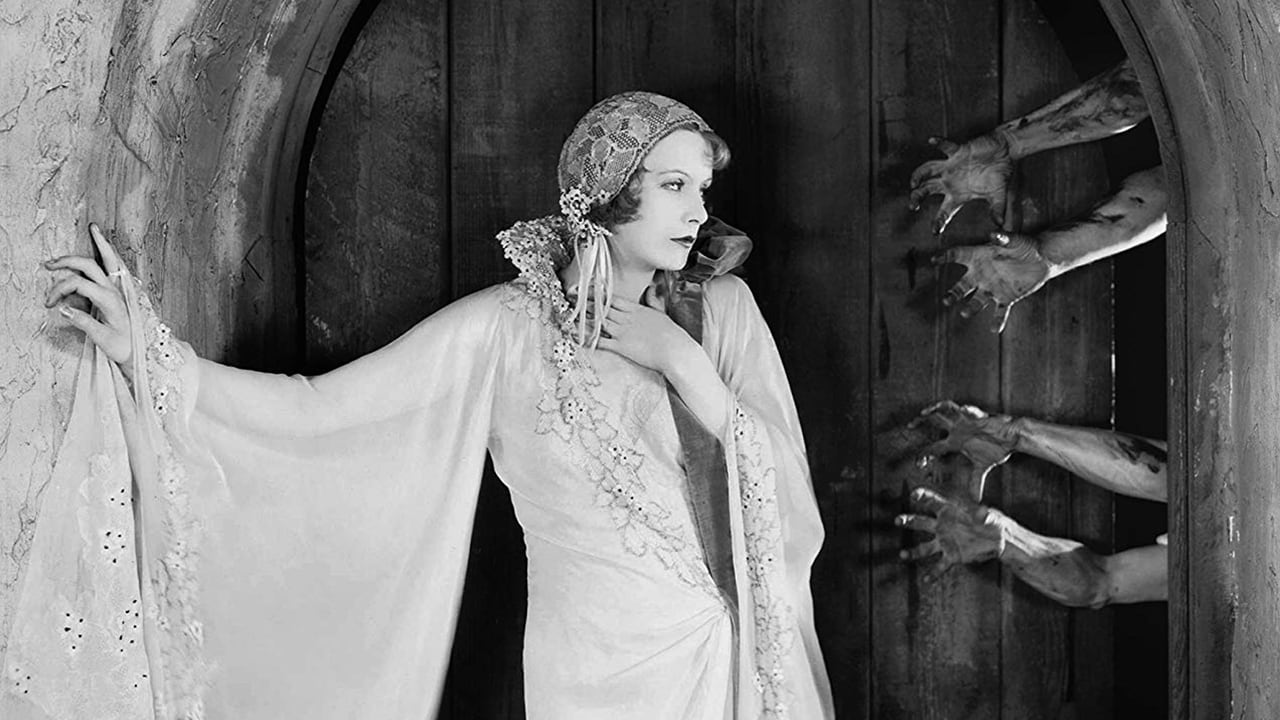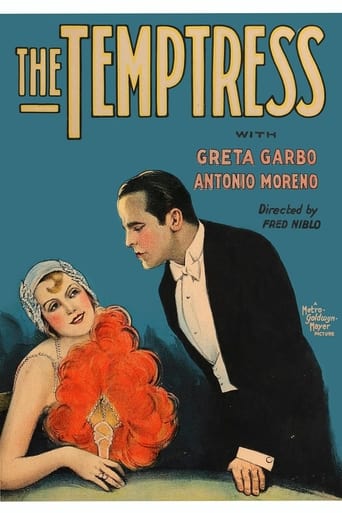

Don't listen to the Hype. It's awful
... View MoreBoring, over-political, tech fuzed mess
... View MoreInstead, you get a movie that's enjoyable enough, but leaves you feeling like it could have been much, much more.
... View MoreA clunky actioner with a handful of cool moments.
... View MoreIn his novel 'La Tierra de Todos' (The Land of All), the Spanish author Vicente Blasco Ibáñez sets up the mind ( personified by an architect) against the body (the beauty of the temptress), and, social order (a workforce to build, here, a dam) against anarchy (a renegade leader and his band). For the author, males who fight with their bodies against (young) female bodies are condemned (go bankrupt). The architect (Order) fights also against the band leader (Anarchy) in the Argentine way: with a whip in an arena in the form of a circle. Based on this novel, Fred Niblo shot a most memorable movie with spectacular scenes (the destruction of a dam), brutal bloody fights, a masked ball and, most impressive of all, the heavenly (satanic) beauty of a young Greta Garbo. Will the body (the temptress) vanquish the mind? The ultimate encounter between the two doesn't turn into a happy end. This movie, with Greta Garbo in one of her best roles, is a must see for all film buffs.
... View More"The Temptress has now been shown here—terrible. The story, Garbo, everything is extremely bad. It is no exaggeration to say that I was dreadful. I was tired, I couldn't sleep and everything went wrong..." (Greta Garbo)The roaring twenties...not a very enthusiastic quotation, particularly when we consider the fact its author is Garbo herself, the Garbo people flock to see as a vamp, as a femme fatale who wins and ruins men, as a beauty on the screen, an object of dreams and desires. And so has the driving force been for all these years - I doubt whether THE TEMPTRESS would be watched by anyone nowadays ... if it were not for GARBO. However, she detested it and no wonder why...For most people who know Garbo's psyche a bit, her melancholy her moments of peace, moments of being 'let alone' and, moreover, what a period it was (the mid 1920s) in her career are close to understand how she must have felt: director Mauritz Stiller, her tutor and a person who taught her skills, who directed her in Swedish GOSTA BERLING SAGA (1923) and brought her to America, is fired just a few days after the production begins; she still does not understand/speak English so well and intuitively learns whom to consider 'familiar soul' among many 'foreigners' in the glossy and tremendous studio that MGM was at the time. What is more, her sister Alva dies in the faraway Sweden. And no wonder she writes the aforementioned bitter words to her friend in Stockholm Lars Saxon. But, the test of time shows something more optimistic and within the variety of opinions and MGM targets of the 1920s, THE TEMPTRESS is overall not that bad as a movie... The CONTENT...Marked by spiritual/religious references at the beginning and at the end (from Rabindranath Tagore, the first non-European Nobel laureate to Jesus Christ, the Saviour of the world who died for love and manifests his presence in the people in need), the content is visibly the product of MGM studio system and its methods: goodness vs evil clash that uprights the hearts: love that conquers hatred and reconciliation that overcomes vengeance. As it is quite a common theme for films of the time, I would highlight more the technical aspects of the movie some of which appear to be more convincing and more appropriate in this relation. The TECHNICAL MERITS appear, of course, thanks to the people Garbo liked and worked with.The direction by Fred Niblo, famous for his silent BEN HUR but also for a later Garbo film, THE MYSTERIOUS LADY, is a subtle work filled with stylish moments and delicate as well as thrilling handling of scenes. Although he replaced Stiller, her "sole tutor and companion," (whose style was quite remarkable but different from what they did and understood in Hollywood), she must have felt pretty comfortable under Niblo's direction as she left him a touching note after the work had finished. The lighting by William Daniels, a crucial name of all Hollywood Garbo films, boasts of truly remarkable moments. The effect is no lesser than in greater films, in particular when filming Garbo's face. Consider the scene at the mirror, for instance...indeed, most of what we see of Garbo and her acclaimed "performance for the camera" we owe to Daniels. He captured that essence of her sensitivity to light and shadow as portrait photographer Sinclair said: "Garbo 'feels' the light." And...production by Irving Thalberg, perhaps he did not play that role as in later cooperation with Garbo, but, undeniably, prompted the energy and unbelievable possibilities from the inside of the Swedish Sphynx. As a result, Garbo's portrayal of intriguing Elena is worth appreciation.And here arises a tricky but a logical question: So why isn't THE TEMPTRESS considered to be a significant GARBO SILENT FILM? First, Garbo is the best vamp in FLESH AND THE DEVIL; second, her best leading man is John Gilbert (one of the most famous pairing the screen has ever seen); third, the most 'exotic' and arousing locations are in WILD ORCHIDS; fourth, Garbo's most magical moments are in A WOMAN OF AFFAIRS; fifth, the lighting pearls are in THE MYSTERIOUS LADY (particularly its 'candle sequence'; sixth, THE TEMPTRESS was not viewers' first fascination with Garbo because her Hollywood debut is not THE TEMPTRESS but THE TORRENT. So... this film has been bound for years to negligence (nothing special for many). However, it occurs to be undeserved and unfair...Antonio Moreno is not bad as her leading man...has his moments at least; some of the supporting cast do fine jobs, including Lionel Barrymore as Canterac who appears, years later, in a specific talkie with Garbo, GRAND HOTEL; some scenes can boast of brilliant camera-work (just to mention the witty and visual banquet at Fontenoy's or the presentation of the Argentine); many moments can boast of thrill, including the Argentine fight between Robledo (Antonio Moreno) and the wicked Manos Duras. Except for many clichés noticeable in the film, which, certainly, lower its value, it is important to consider such atmospheric scenes like the masquerade.Although detested by the main STAR of the film, by the leading lady who was unique and brilliant at multiple levels, THE TEMPTRESS is not so bad. Garbo alone helps us get rid of some sophisticated expectations from the content. As a matter of fact, more of her films do not boast of particularly clever content...yet, EVERY Garbo film is worth seeing because of her tremendous presence on the screen, the unforgettable magic and something really special which she offered the cinema of her time and the cinema of all periods. See this silent film AFTER you have seen hyper-sensual FLESH AND THE DEVIL, subtle A WOMAN OF AFFAIRS, refreshing THE SINGLE STANDARD, innovative THE KISS, stunning THE MYSTERIOUS LADY but allow yourself at least a single viewing of its beautifully restored DVD version. You will not be disappointed.
... View MoreGreta Garbo's second Hollywood feature is an irresistible meller, done to a turn by director Fred Niblo at his finest. (Dig those parallel tracking shots; first over a formal dining table laden w/ service & delicacies, and then under the same table, now heavy w/ service & delicacies of a rather different nature.) At this point in her career, Garbo was still playing femme fatale types (watch how she cups her lover's face in her hands) and in this adaptation of a rum Blasco-Ibanez novel, she drives four men to their ruin without lifting a finger. The plot takes us from Parisian highlife (a superb masked ball, a suicide at a banquet, overnight love in a park) down to the Argentine for dam building, a duel of honor played out with whips, sabotage & floods (with remarkable effects), and then back to Paris for our moral. When he's at his best, co-star Antonio Moreno is a bit like Brian Donleavy, alas he usually just looks vaguely surprised. But Roy D'Arcy & Lionel Barrymore get to whoop things up splendidly. Note that Garbo's regular lenser Wm Daniels shares credit with Tony Gaudio. But everyone deserves a prize, including one for the fine newly commissioned score.
... View More"The Temptress" has a lot going for it, but it begins so sloooowly, and contains far too many intertitles.I couldn't help thinking how much better it could have been with, maybe, Ernst Lubitsch or D.W. Griffith directing. This is supposedly a MOTION PICTURE, not a novel.Still the directors gave us some wonderful shots and angles.One particular sequence is told with a shadow! Superb.And some running shots, with horses and a wagon, are worthy of the best of John Ford.Then one particular action scene, a duel, is as exciting, and surprisingly graphic, especially for 1926, as one could hope for.Still, overall, the story is somewhat dull and it's told often dully.If it weren't for the chance to watch movie history, including early Garbo, and the action scenes, and the often interesting direction and photography, it might not be worth watching.But it is, especially the new version at Turner Classic Movies, with a new score by young Michael Picton. Maestro Picton might well turn out to be a new Elmer Bernstein, who has -- it pains me to say -- passed on, but who was one of the greatest composers of the last 100 years.
... View More